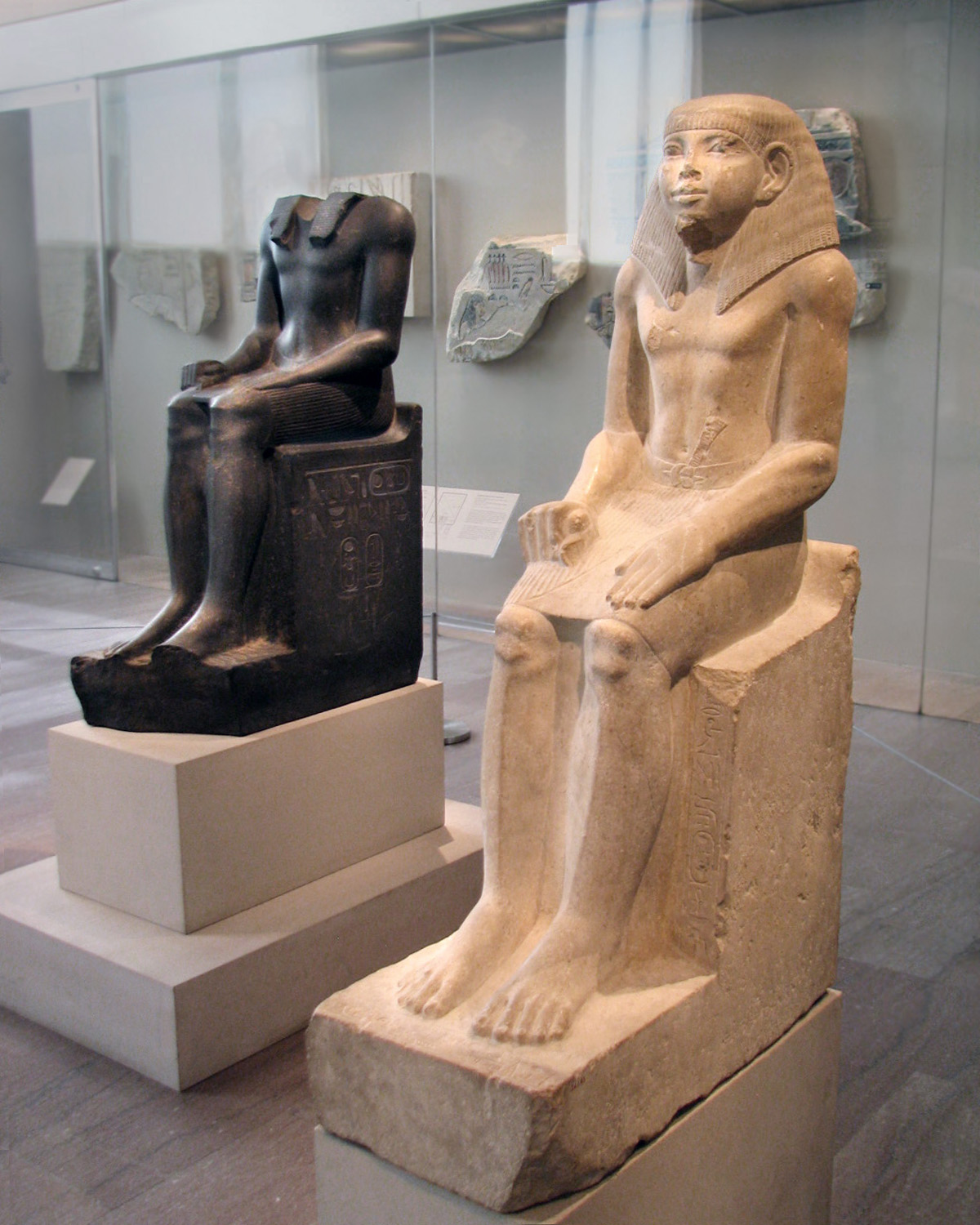
Seated Statue of the Steward Sehetepibreankh
Dynasty 12, most probably reign of Amenemhat II (ca. 1919-1885 BCE)
Limestone, from Lisht South, shaft 6L.P19; MMA excavations, 1923-24
Rogers Fund and Edward S. Harkness Gift, 1924m (23.1.45)

Seated Statue of the Steward Sehetepibreankh
Dynasty 12, most probably reign of Amenemhat II (ca. 1919-1885 BCE)
Limestone, from Lisht South, shaft 6L.P19; MMA excavations, 1923-24
Rogers Fund and Edward S. Harkness Gift, 1924m (23.1.45)
|
(From the info card) "Only a few bricks remain of a fairly large tomb precinct southwest of the pyramid complex of Senwosret I. Several shafts dot the area, and this statue was found in one of them. According to the inscriptions, it represents 'the king's true acquaintance, his beloved, the steward Sethetepibreankh' and must have once stood in an above-ground chapel." |
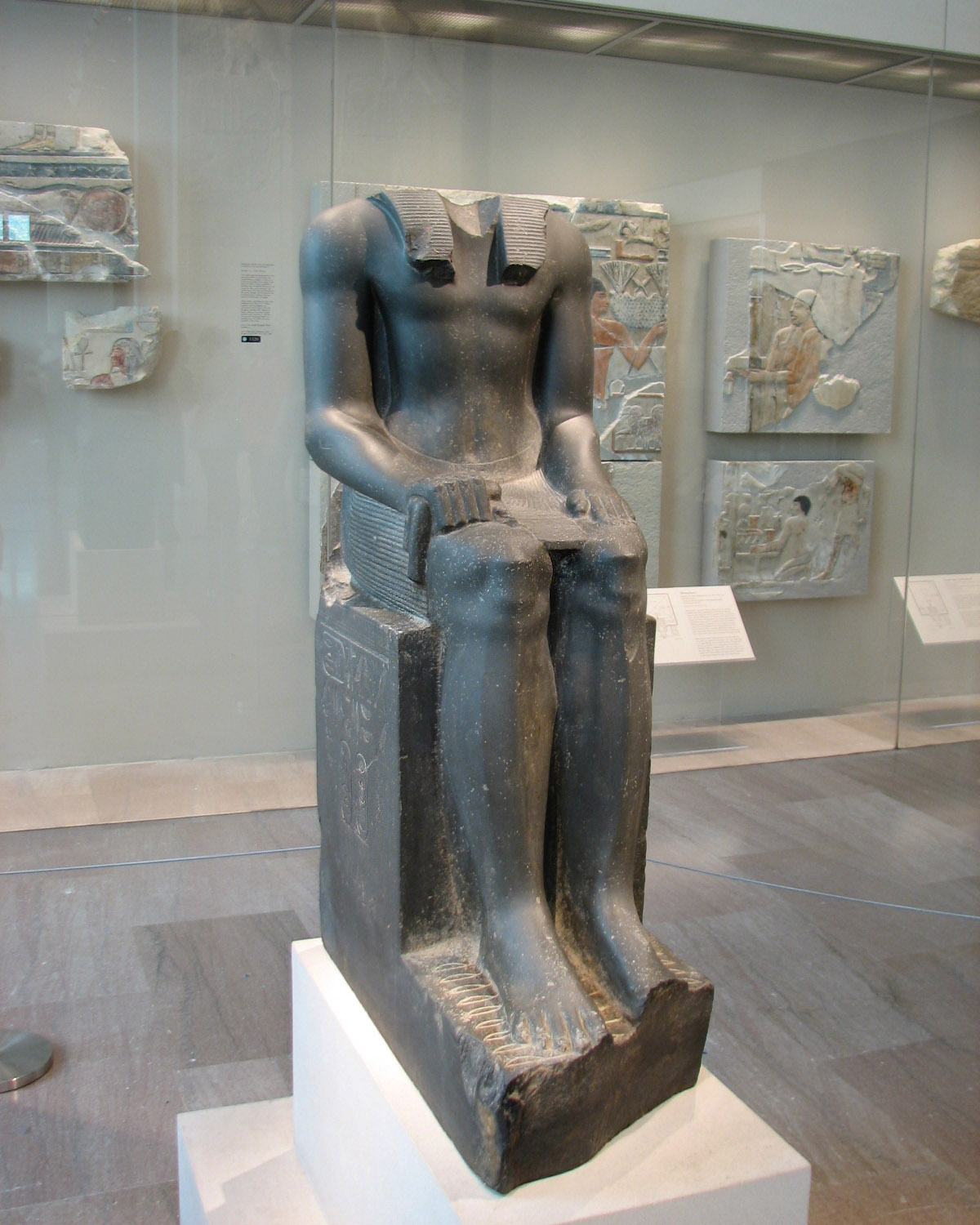
Seated Statue of King Senwosret I
Dynasty 12, reign of Senwosret I (ca. 1961-1917 BCE)
Greywacke, said to be from the Fayum
Ex coll.: Jules S. Bache, Gift of Jules S. Bache, 1925 (25.6)
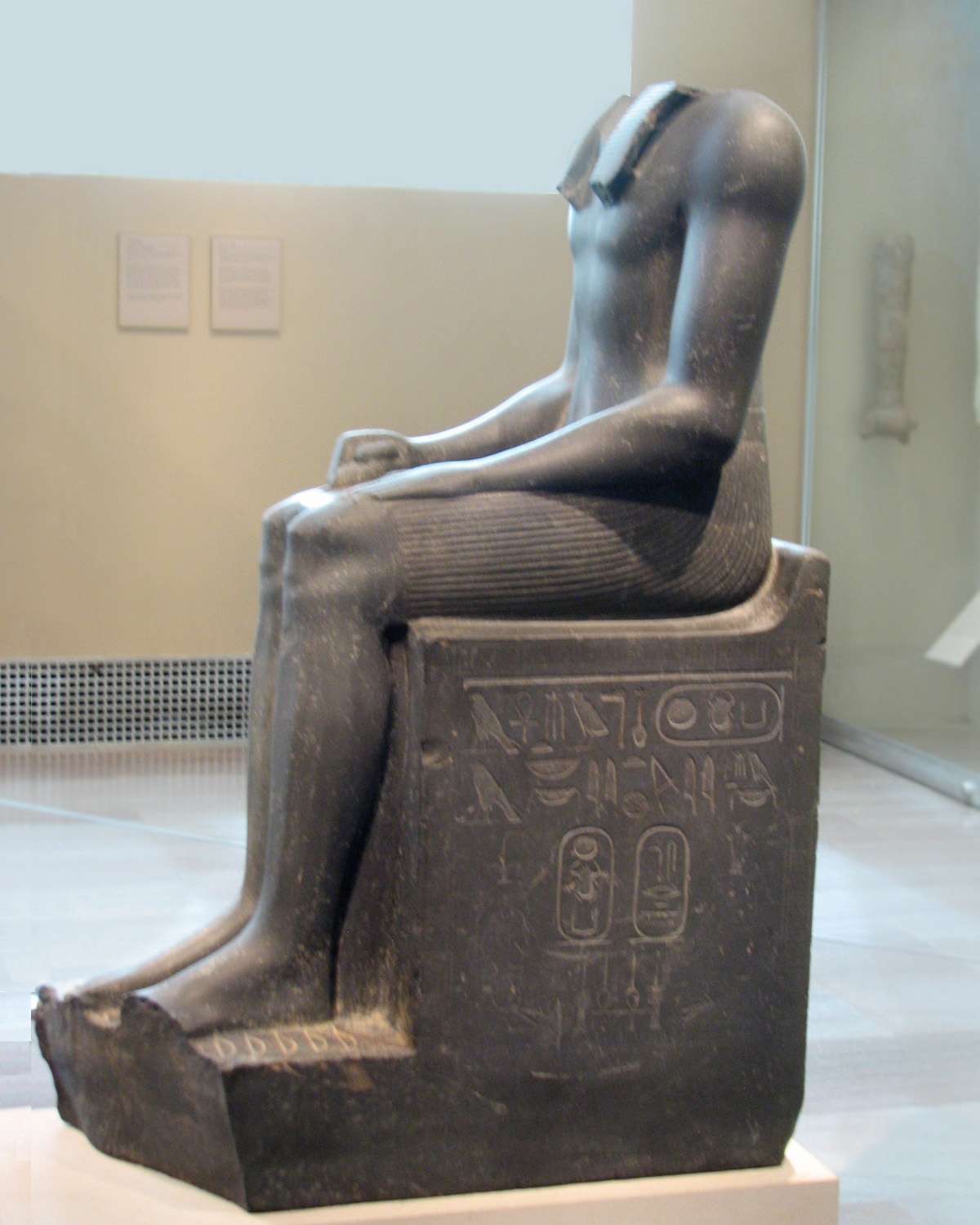
If you click to see it larger, you can see the cartouches:

Source Budge's Two Volume Dictionary
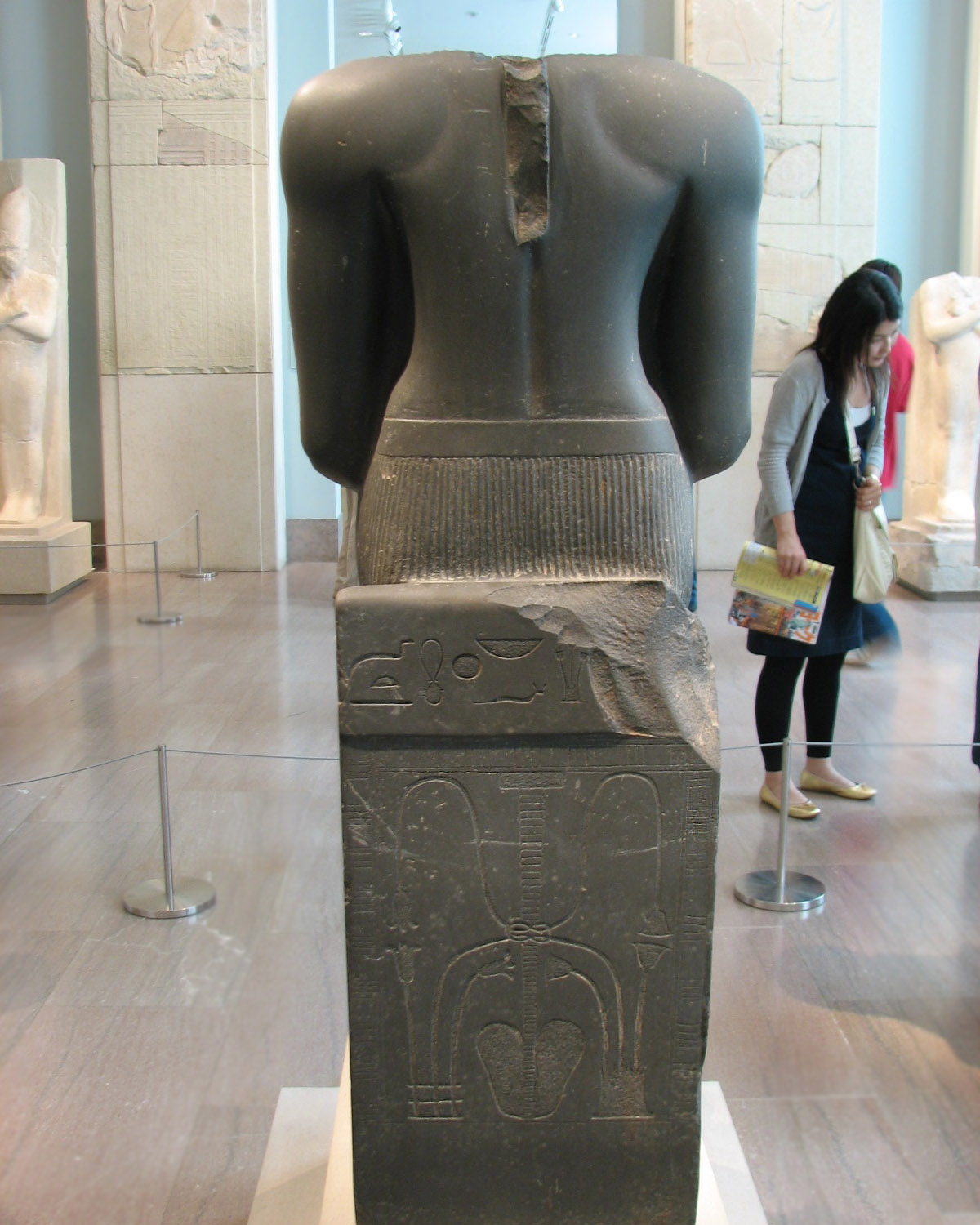
We can see the 'sem-tawy' which means unification of the two lands...
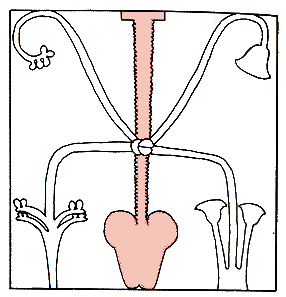
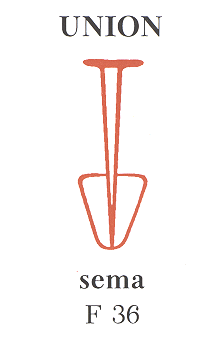
|
"The sema hieroglyph represents two lungs attached to the trachea, an anatomical unit which provided a natural symbol for the concept of the unification of equal parts, and particularly, the unification of the two kingdoms of Upper and Lower Egypt. The union of the Two Lands stood behind much of the ritual and idealogy of Egyptian kingship, and the sema hieroglyph is found in a wide range of contexts which underscored the king's uniting rule." Quote and illustrations from _Reading Egyptian Art_ by Richard Wilkinson, pages 80-81 Notice both Sehetepibreankh and Senwosret I are holding a folded cloth or a rope in their right hand. This statue fragment features just the right arm holding this, as well:
|
| The only reference I can find to the meaning of the cloth or rope is that it "resembles the hieroglyphic sign for 'health.'" (Eternal Egypt: Masterworks of Ancient Art from the British Museum, by Edna R. Russmann, Thomas Garnet Henry James, British Museum; British Museum Press, 2001, page 138) |
